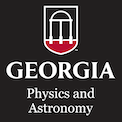Organic spin valves (OSVs), which are comprised of an organic spacer sandwiched between two ferromagnetic (FM) electrodes, have attracted great attention from scientific community in the past 16 years. Such spin valve structures using inorganic spacers have revolutionized magnetic memory and sensor application. Magnetoresistance (MR) response in OSVs generally relies on the spin injection/detection at the FM/organic interface (dubbed spinterface), and the spin diffusion length in the organic spacer. Organic semiconductors (OSEC) possess weak hyperfine interaction and spin-orbit coupling, and hence long spin lifetime. The spin transport is due to π-orbital electrons in OSECs which are comprised of light-weight elements such as hydrogen and carbon. Therefore, they have been thought to possess considerably long spin diffusion length, suitable for obtaining larger MR in OSVs. However, in conventional OSVs, the interface between the organic and FM electrodes, and the structural order of the organic interlayer are poorly controlled because epitaxial growth is not possible for OSECs. Therefore, the spinterface effect and spin transport in these devices are complicated, and their complete understanding has remained elusive. In this talk, I will discuss the current advanced studies in our group for understanding and manipulating the spinterface effect and spin transport in OSVs. In particular, for the spin transport, we will show the statistical origin of the hyperfine interaction strength and the existence of curvature induced spin-orbit coupling in OSECs. For the spin injection/detection, we will present several methods to manipulate the spinterface effect. These include the use of self-assembled monolayers (SAM) at the interface, an organic ferroelectric insulator for the spacer, and organic/FM/organic triple layers for the spacer.
Events Calendar View
-
Departmental Colloquium
Jan 11, 2018
Current Advances in Spinterface and Spin Transport in Organic Spin Valves

Guest: Professor Tho Nguyen, UGA Physics and Astronomy
Thursday, January 11, 2018 3:30 pm - 4:30 pm
Location: Physics Auditorium (202) -
CSP Lunch Seminar
Jan 16, 2018
Adsorption of Flexible Polymer Chains on a Surface
-
CSP Lunch Seminar
Jan 23, 2018
Computational drug discovery--the Challenges and Solutions
-
CSP Lunch Seminar
Jan 30, 2018
Monte Carlo simulations of the XY vectorial Blume-Emery-Griffiths model in multilayer films for 3He-4He mixtures
-
CSP Lunch Seminar
Feb 6, 2018
Bending-Stiffness Dependent Generic Structural Transitions of Helical Polymers
-
Departmental Colloquium
Feb 15, 2018
The Road to Exascale Computing: Perspectives from a Computational Physicist
The next generation leadership-class high performance computer, Summit, will arrive at Oak Ridge National Laboratory by the end of the year of 2018. Summit is expected to deliver more than five times the computational performance of our current supercomputer, Titan. It will have a hybrid architecture, with each compute node containing multiple IBM POWER9 CPUs and NVIDIA Volta GPUs. As Summit brings us one step closer to Exascale computing, it will enable scientists to solve increasingly complex problems more efficiently. It will also provide opportunities to pioneer programming strategies and practices for high performance computing software development. What do these emerging technologies mean to physics and materials science research? What are the considerations when designing computer algorithms and developing scientific software to unleash the power of a gigantic computer like Summit? In this colloquium, I will share my experiences and insights on these questions, demonstrated through a few frontier research problems in computational physics and materials science.
Page 77 of 121, showing 6 records out of 723 total, starting on record 457, ending on 462

